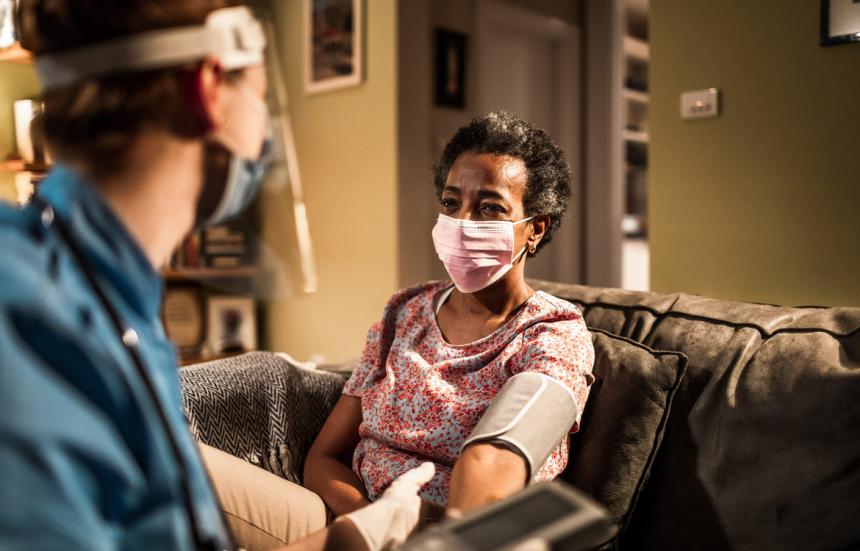Rise in High Blood Pressure as a Result of COVID

It’s been two long years since Covid-19 hit the U.S. Routines have been completely disrupted. We’ve adopted new lifestyles that involve social distancing, wearing masks and staying home. We skipped doctor appointments, wellness screenings and routine care. Many people lost jobs and businesses. And of course, millions of Americans got very sick and lost loved ones.
The worst might be behind us, but some remnants of the pandemic remain such as a rise in the blood pressure of many Americans, according to a study published in Circulation.
Before the Pandemic
Rewind to early 2018, blood pressure control was a national public health priority. The American Heart Association reported about 103 million American adults as having high blood pressure – that’s nearly 50 percent. An epidemiologist associated with the American Heart Association attributes the high numbers to an aging American population with a long life expectancy.
“Many medical professionals were concerned the effects Covid would raise blood pressure among Americans even higher,” says Bernard Kaminetsky, MD, medical director, MDVIP. “To gauge blood pressure levels, Quest Diagnostics, who were already conducting a longitudinal study on blood pressure, added variables to track blood pressure changes during the pandemic.”
Blood Pressure Study
Quest Diagnostics ran a three-year, nationwide blood pressure study that spanned from 2018 to 2020. Blood pressure readings were conducted on almost 450,000 employees and spouses/partners from all 50 states and Washington, DC who were participating in a wellness program operated by Quest. The average age of participants was 45.7 and 53.5 percent were women.
Each participant had their blood pressure taken by a healthcare professional during 2018, 2019 and 2020. Readings were documented and compared during the following periods.
- 2018 versus 2019
- January through March 2019 versus January through March 2020
- April through December 2019 versus April through December 2020
- January 2019 through March 2020 (pre-pandemic) versus April through December 2020 (pandemic)
April was designated as the start of the pandemic because most U.S. jurisdictions issued stay-at-home orders between mid-March and the first of April. The data was analyzed using statistical software and adjusted for the period in which the blood pressure readings were taken, gender and age on blood pressure changes. Researchers followed the Strengthening of Reporting of Observational Studies in Epidemiology (STROBE) guidelines for reporting on cross-sectional studies. Healthy blood pressure is considered anything less than 120/80 mm Hg. Study results showed:
- Blood pressure didn’t change much between 2018 and 2019.
- Blood pressure began rising during the pandemic (period between April and December 2020).
- The rise in pressure each month averaged between 1.10 and 2.50 mmHg for systolic pressure (top number) and between 0.14 and 0.53 mmHg for diastolic pressure (bottom number) compared to measures taken during 2019.
- A rise in systolic and diastolic blood pressure was more common among women and older adults. Younger participants tended to have a rise in diastolic pressure.
- During the pandemic (between April and December 2020) 26.8 percent of participants entered the high blood pressure category, while 22 percent dropped to a lower blood pressure category.
“Any number of factors could have caused the pressure to rise,” says Dr. Kaminetsky. “The shutdown was notorious for causing stress and depression and contributing to other variables that can raise blood pressure such as an unhealthy lifestyle, strained relationships, financial problems and poor management of a pre-existing blood pressure issue.”
If you are struggling with blood pressure, work with your doctor. If you feel it may be related to pandemic stress, here are some tips to help you control the stress »
Don’t have a physician? Consider working with MDVIP. MDVIP-affiliated physicians have the time and resources to help you focus on your health. Find a physician near you and begin your partnership in health »


